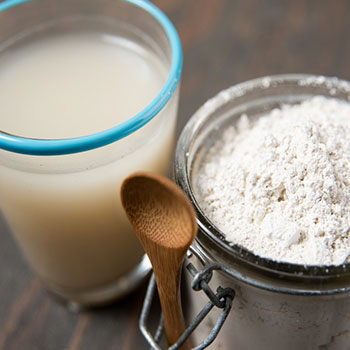Diatomaceous earth is a powder composed of fossilized algae called “diatoms,” single-celled organisms found in bodies of water. Diatomaceous earth is used for various reasons such as an insecticide, an anti-caking agent in animal feed, a filtration aid, and an additive in construction materials, and it has also been studied for its potential biomedical uses. However, some people add food-grade diatomaceous earth to their food and beverages because it is a rich source of silicon dioxide. The chemical element silicon occurs naturally as silicon dioxide in many foods, such as whole grains and vegetables.
Proponents of diatomaceous earth suggest that its high silicon dioxide content helps with weight loss, detoxification and cleansing, energy levels, joint pain, teeth and gums, cholesterol and blood pressure, and food absorption. Consumers and some retailers of diatomaceous earth supplements also claim that its abrasive (rough) and absorptive properties improve digestive health by ridding the intestines of bacteria and parasites and regulating bowel movements. However, there hasn’t been enough research conducted on diatomaceous earth as a dietary supplement to support these claims. In addition, the biological role of silicon in humans is uncertain, so there is no recommended dietary intake amount.
Updated 6 March 2019

